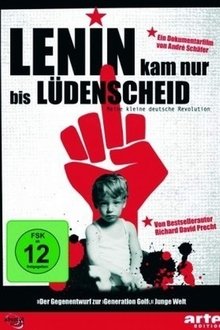On the island of Rügen in the Baltic Sea lies one of the most megalomaniac projects built by the Nazis. The ‘Monster by the Sea’, a colossus of brickwork that stretches for kilometres, intended as a futurist holiday resort for the inhabitants of the Third Reich. A paragon of ‘guilty architecture’. Later occupied by the communist regime, it has since the fall of the Wall fallen victim to property developers who have found it a tough nut to crack. Nico Weber’s Inside Prora uncovers the storied history of a project that symbolises the utopian intentions of modernism and the emergence of mass tourism.
Related Movies

Friedrich Engels - Der Unterschätzte (2020)
Friedrich Engels and Karl Marx formed one of the most famous duos in world history. In contrast to Marx, however, Engels seems to have fallen into oblivion today. Unjustly so. Moving archive images, documentary footage and graphic novels lead us back to the time of Friedrich Engels, who shaped the Communist movement like no other.
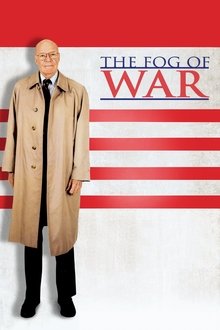
The Fog of War (2003)
Using archival footage, cabinet conversation recordings, and an interview of the 85-year-old Robert McNamara, The Fog of War depicts his life, from working as a WWII whiz-kid military officer, to being the Ford Motor Company's president, to managing the Vietnam War as defense secretary for presidents Kennedy and Johnson.
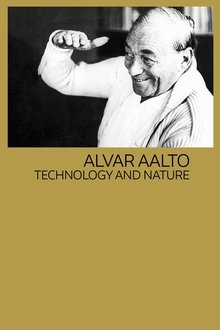
Alvar Aalto: Technology and Nature (1987)
The Finnish architect Alvar Aalto (1898–1976) is one of the great figures of modern architecture, ranked alongside Gropius, Le Corbusier and Mies van der Rohe. This film analyses Aalto’s uniquely successful resolution of the demands and possibilities created by new technology and construction materials with the need to make his buildings sympathetic both to their users and to their natural surroundings. His inventive use of timber in particular represents both a reference to the forest landscape of Finland and a building material that is ‘warm’ and extremely adaptable. Filmed in Finland, Italy, Germany and the USA, this documentary shows how the Finnish natural environment and art traditions were essential elements in Aalto’s pioneering harmonization of technology and nature.

Neutra: Survival Through Design (2019)
This insightful documentary feature from PJ Letofsky serves as a profile of iconic Austrian-American Architect Richard Neutra, whose work and legacy have helped shape the modern understanding of design, architecture and the interconnected fabric of nature. Today, Richard's legacy lives on through his son, Dion, who has taken up his father's mantle after nearly three-decades under his mentorship.

We Are Not Princesses (2018)
We Are Not Princesses is a documentary film about the incredible strength and spirit of four Syrian women living as refugees in Beirut as they come together to tell their stories of love, loss, pain and hope through the ancient Greek play, Antigone.
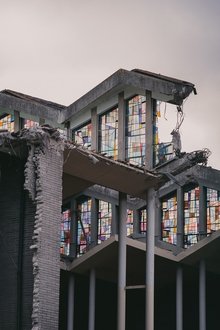
Making Dust (2023)
Making Dust is an essay film, a portrait of the demolition of Ireland's second largest Catholic Church, the Church of the Annunciation in Finglas West, Dublin. Understanding this moment as a 'rupture', the film maps an essay by architectural historian Ellen Rowley on to documentation of the building's dismantling. Featuring oral interviews recorded at the site of the demolition and in a nearby hairdressers, the film invites viewers to pause and reflect on this ending alongside the community of the building. The film is informed by Ultimology, and invites its audience to think about the life cycles of buildings and materials, how we mourn, what is sacred, how we gather, what we value and issues of sustainability in architecture.

Havana, From On High (2019)
The chronic shortage of housing in Central Havana has pushed the city upwards, where life spills out onto the rooftops. Resilient and remarkable, these rooftop dwellers have a privileged point of view on a society in the process of major transformation.

Brasilia, Contradictions of a New City (1968)
In 1967, de Andrade was invited by the Italian company Olivetti to produce a documentary on the new Brazilian capital city of Brasília. Constructed during the latter half of the 1950s and founded in 1960, the city was part of an effort to populate Brazil’s vast interior region and was to be the embodiment of democratic urban planning, free from the class divisions and inequalities that characterize so many metropolises. Unsurprisingly, Brasília, Contradições de uma Cidade Nova (Brasília, Contradictions of a New City, 1968) revealed Brasília to be utopic only for the wealthy, replicating the same social problems present in every Brazilian city. (Senses of Cinema)

Karl Merkatz - Vom Tischler zum echten Wiener (2010)
Documentary about the life and works of legendary Austrian actor Karl Merkatz.

Facing the Phantoms (2009)
French film and WWII historian Sylvie Lindeperg analyzes Alain Resnais's seminal 1956 film, "Night and Fog", and attempts to place it in the context of the historical treatment of WWII, and specifically of the Holocaust, in the decade following those harrowing events. Oddly, she argues that the images of Resnais's famous film are "powerless", in her words.
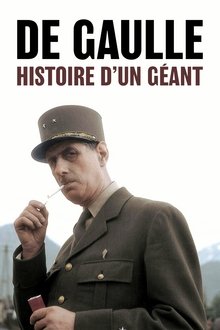
De Gaulle, histoire d'un géant (2020)
50 years after the death of General De Gaulle, this film retraces his life, from his birth in 1890 to his burial at Colombey-Les-Deux-Eglises in 1970.

Borrowed from Nature (2020)
Borrowed From Nature explores the rich and complex history of Japanese gardens in western Canada. Through the principles and design philosophy of famed Japanese Canadian designer Roy Tomomichi Sumi, we visit Japanese gardens in Lethbridge, AB, Vancouver, BC, and New Denver, BC, revealing hidden testaments to an enduring Japanese influence in our country
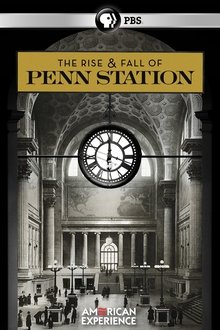
The Rise & Fall of Penn Station (2004)
In 1910, the Pennsylvania Railroad successfully accomplished the enormous engineering feat of building tunnels under New York City's Hudson and East Rivers, connecting the railroad to New York and New England, knitting together the entire eastern half of the United States. The tunnels terminated in what was one of the greatest architectural achievements of its time, Pennsylvania Station. Penn Station covered nearly eight acres, extended two city blocks, and housed one of the largest public spaces in the world. But just 53 years after the station’s opening, the monumental building that was supposed to last forever, to herald and represent the American Empire, was slated to be destroyed.

In Rheinsberg (1982)
Documentary about the small city of Rheinsberg, once the summer residence of Prussian princes. Average working class people comment on the history of this special place.

This is How the Obelisk Was Born (1936)
The construction of the Obelisco in Buenos Aires, Argentina.
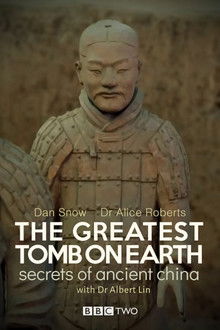
The Greatest Tomb on Earth: Secrets of Ancient China (2016)
Dan Snow, Dr Alice Roberts and Dr Albert Lin investigate a series of earth-shattering discoveries at a mighty tomb guarded by the Terracotta Warriors in China.

The Donner Party (1992)
Doomed attempt to get to California in 1846. More than just a riveting tale of death, endurance and survival. The Donner Party's nightmarish journey penetrated to the very heart of the American Dream at a crucial phase of the nation's "manifest destiny." Touching some of the most powerful social, economic and political currents of the time, this extraordinary narrative remains one of the most compelling and enduring episodes to come out of the West.
